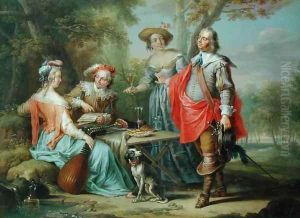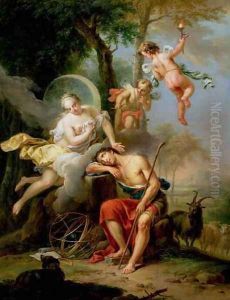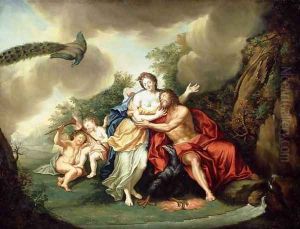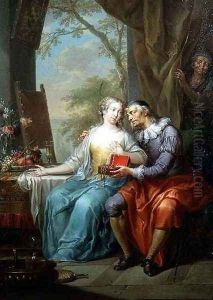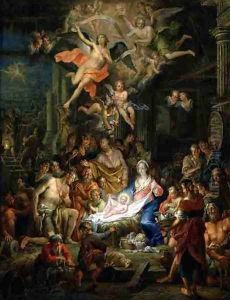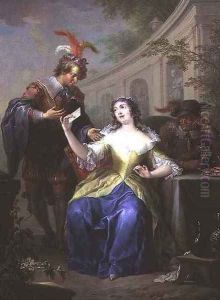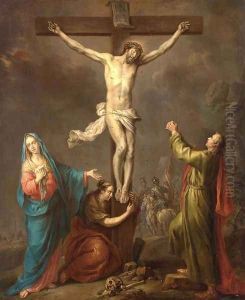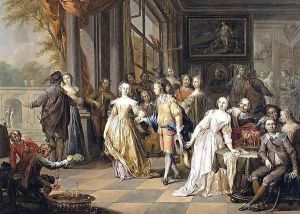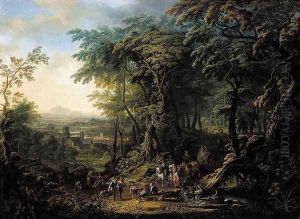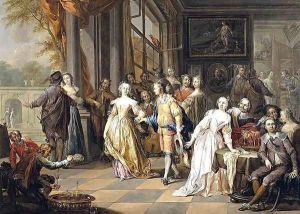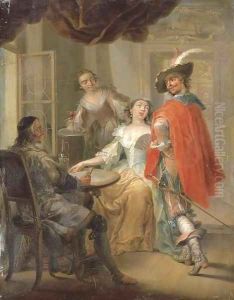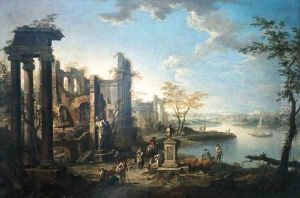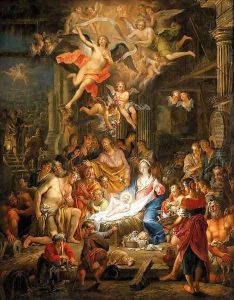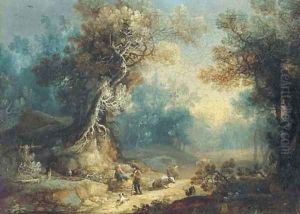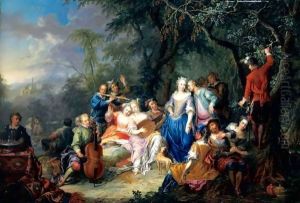Frans Christoph Janneck Paintings
Frans Christoph Janneck was an Austrian painter, born in 1703 in Graz, Austria. He is primarily known for his contributions to the Rococo movement, which was characterized by ornate and highly decorative elements. Janneck's work was particularly noted for its intricate detail, vibrant colors, and dynamic compositions, making him a distinguished figure in the Austrian art scene of the 18th century.
Janneck received his early training in Graz before moving to Vienna, where he furthered his studies and established his career. In Vienna, he became associated with other prominent artists of the time and was influenced by the flourishing artistic environment of the city. Janneck specialized in genre scenes, allegorical compositions, and religious paintings. His genre scenes, often filled with lively figures and richly detailed interiors, provide a glimpse into the social life of the period.
Throughout his career, Janneck also engaged in creating altar pieces for churches, showcasing his versatility and command over different subjects. His religious works are celebrated for their spiritual depth and the ability to convey the divine through art.
Janneck's contributions to art were recognized by his contemporaries, and he became a member of the Imperial Academy of Arts, an institution that played a pivotal role in the development of art in the Habsburg Empire. This affiliation provided him with significant commissions and furthered his reputation as a leading artist of his time.
Despite his success, detailed records of Janneck's life remain scarce, and much of what is known about him comes from the study of his surviving works. After his death in 1761, Janneck's influence persisted, particularly in the region of Austria, where he had spent the majority of his career. His works continue to be studied and appreciated for their contribution to the Rococo style and the broader narrative of European art history.
